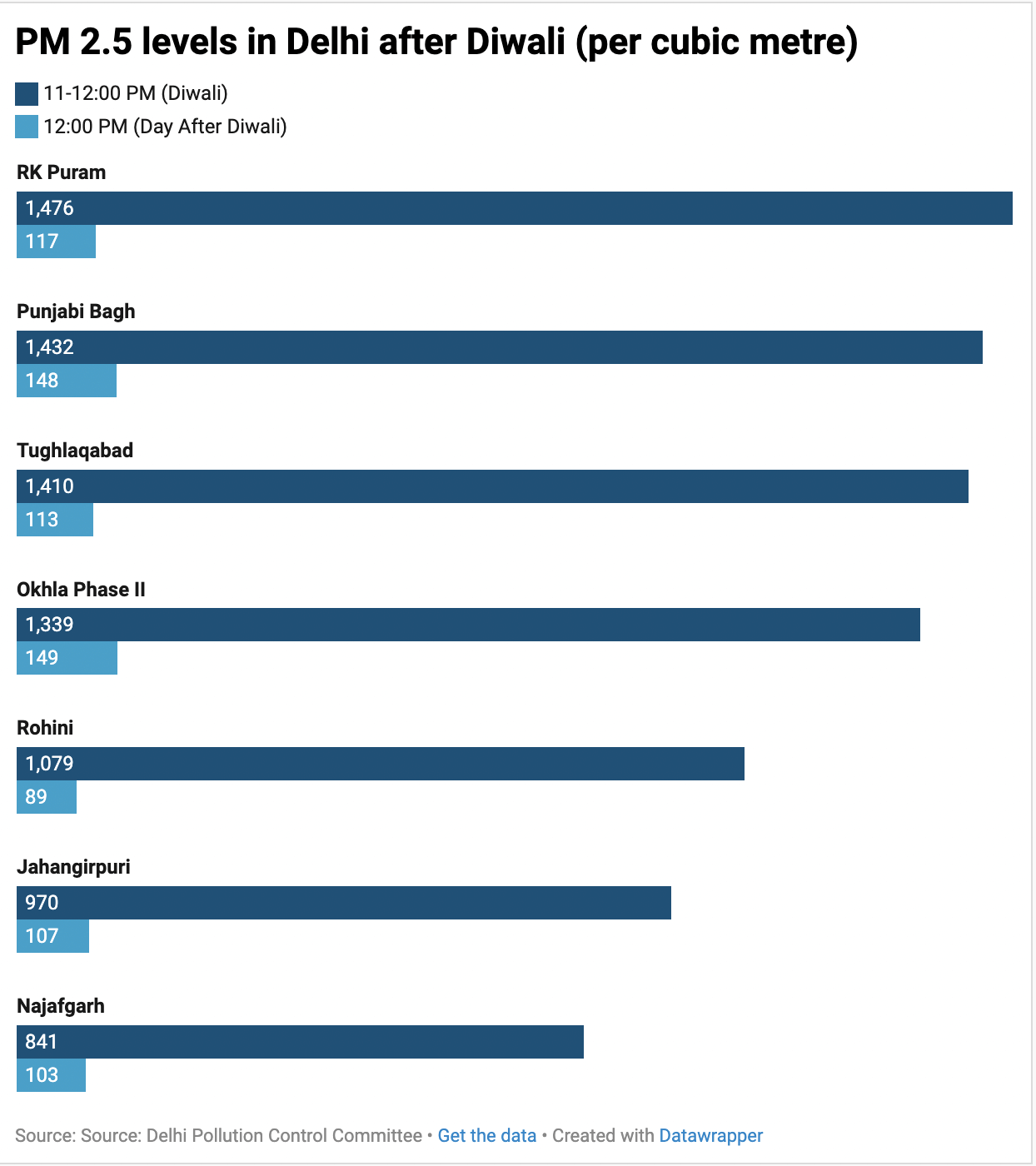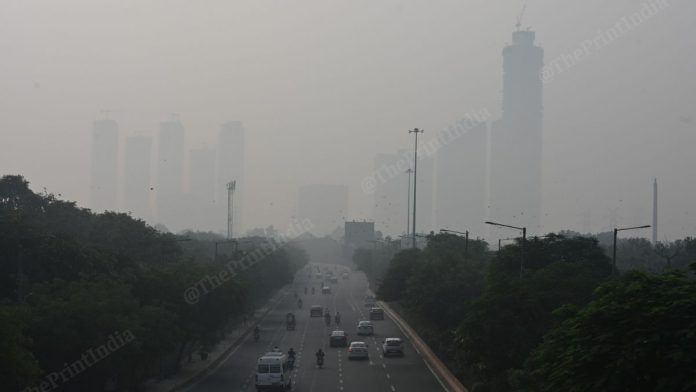New Delhi: Concentration of PM2.5, tiny airborne particles that can get absorbed into the bloodstream and pose significant health risks, surged by midnight to the second-highest recorded in Delhi over the past five Diwalis, but plummeted just as rapidly by Tuesday afternoon.
This drop for a post-Diwali day, experts told ThePrint, was mainly because of weather conditions and a lower-than-usual count of farm fires.
Central Pollution Control Board (CPCB) data shows that Delhi’s concentration of PM2.5 peaked at an hourly average of 675 micrograms per cubic metres (ug/m3) at midnight on 21 October. But it was down to 82 ug/m3 by 3 pm Tuesday.
“It is quite common for Diwali night to see extreme pollution, and then a steep fall the next morning. As the sun rises, the particles start dissipating. Also, the winds were favourable and since it was not too cold, particulate matter did not stay in the air for too long,” said Shambhavi Shukla, programme manager at think-tank Centre for Science and Environment (CSE).
The same trend in real-time PM2.5 levels held up across monitoring stations in the city.
At RK Puram, a residential area sandwiched between the Outer and Inner Ring Roads, PM2.5 logged a high of 1,476 ug/m3 at midnight and fell to 117ug/m3 by Tuesday afternoon.
Similarly, PM2.5 exceeded 1,000 ug/m3 in Rohini, Tughlaqabad, Okhla Phase-II and Punjabi Bagh, and reduced to 150 ug/m3 or lower over the same timeframe.

Meteorologists said winds played a key role.
“Till Monday night, calm northwesterly winds were blowing over Delhi-NCR. But starting early Tuesday, the wind direction shifted to easterly, while also picking up speed. Unlike the northwesterly winds, which bring with them pollution from stubble burning to Delhi, the easterlies take it away from Delhi,” said Mahesh Palawat, vice-president (meteorology and climate change) at Skymet Weather.
Shukla pointed out that stubble burning—an annual occurrence that sees farmers set alight paddy crop residues to clear fields for the next round of sowing—was low compared to previous years.
“There’s not much contribution to Delhi’s pollution from other sources,” she said.
Data collated by the Indian Agriculture Research Institute counted farm fires in Punjab from 15 September till 21 October to 415—a drop of 79 percent from the same time period last year.
Diwali this year was also celebrated earlier than the previous years, Shukla said, explaining that colder weather traps pollutants in the air.
“This year, Diwali was marked in October, even as winter is not quite here. So, this weather helped. The mixing height of pollutants was high as well, which means that pollutants have more space to spread out. This led to a reasonable reduction in PM2.5 levels this year,” Shukla said.
Still, pollution too high
The level of PM2.5 dropped on Tuesday, but that doesn’t mean air pollution was particularly low this Diwali—the first in years when ‘green’ firecrackers were allowed in Delhi.
The peak concentration of 675 ug/m3 was the highest PM2.5 reading since Diwali day (November 4) in 2021, when it scaled 728 ug/m3.
Even after Tuesday’s drop, PM2.5 levels, experts say, far exceed India’s maximum safe limit of 60 ug/m3.
Particulate matter 2.5—particles that are 2.5 microns in diameter, one-thirtieth the width of a human hair strand—can penetrate deep into the lungs and enter the bloodstream if inhaled. Long exposure can worsen and trigger cardiac and respiratory ailments.
Delhi environment minister Manjinder Singh Sirsa on Tuesday cited the capital’s air quality index (AQI) and asserted that the impact of ‘green’ firecrackers was negligible on pollution.
But experts say AQI—which was 354 on Diwali day and rose slightly to 351 by Tuesday—is an average of several pollutants. In addition, an AQI reading between 300 and 400 is considered ‘very poor’.
(Edited by Prerna Madan)
Also Read: This Diwali is the first pollution test for Delhi CM Rekha Gupta






